A third Covid-19 vaccine, one made by Johnson & Johnson, could be authorized for use in the United States in the near future. The vaccine was made through a collaboration of J&J’s Belgium-based vaccine division, Janssen Pharmaceutical, and Beth Israel Deaconess Medical Center, and it works a bit differently.
The company will apply for an EUA “middle to late next week,” Dr. Mathai Mammen, Janssen’s global head of research and development, said during a call with reporters last week. The call was held along with officials from the National Institutes of Health. Janssen is the vaccine arm of Johnson & Johnson. If the vaccine is authorized for emergency use, Mammen said, “Our plan is to have supply immediately upon launch.”
Once an application is submitted, “The FDA really looks very, very carefully at the data in each age group and in each demographic group,” Dr. Anthony Fauci, director of the National Institute of Allergy and Infectious Diseases, said during the call.
Data about the single-shot vaccine released, and the company is now collating its data to apply to the US Food and Drug Administration for emergency use authorization. Here’s what’s known about how it works and how it will fit into the mix of vaccines.
How effective is it?
Johnson & Johnson’s Covid-19 single-shot vaccine was shown to be 66% effective in preventing moderate and severe disease in a global Phase 3 trial, the company announced Friday.
The vaccine is 85% effective overall at preventing hospitalization and death in all regions where it was tested.
Its efficacy against moderate and severe disease ranged from one country to another: 72% in the US, 66% in Latin America and 57% in South Africa. This was measured starting one month after the shot.
In South Africa, 95% of cases in the trial were due to a variant known as B.1.351, which is known to be more contagious and carries mutations that may make the virus less susceptible to the antibody immune response — including antibodies prompted by vaccination.
Even those who got moderate cases of Covid-19 in the trial tended to develop a milder course and fewer symptoms, said Dr. Mathai Mammen, Janssen’s global head of research and development. From one month after the shot, all hospitalizations and deaths occurred in the placebo group.
How it works
The J&J vaccine is what is known as a non-replicating viral vector vaccine, using a common cold virus called adenovirus 26. Scientists made this vaccine by taking a small amount of genetic material that codes for a piece of the novel coronavirus and integrating it with a weakened version of adenovirus 26. J&J scientists altered this adenovirus so it can enter cells, but it cannot replicate and make people sick.
AstraZeneca uses a similar platform, but its adenovirus comes from a chimpanzee. The adenovirus carries the genetic material from the coronavirus into human cells, tricking them into making pieces of the coronavirus spike protein — the part it uses to attach to cells. The immune system then reacts against these pieces of the coronavirus.
“So you’re not being infected with the virus that can give you Covid-19 when you get this vaccine. It just has some of the harmless Covid virus proteins on its surface,” explained Dr. William Schaffner, an internist and infectious disease specialist with Vanderbilt University’s Department of Health Policy. “So essentially it’s a sheep in wolf’s clothing, and when your immune system sees it, it responds to it and creates protection against it and in the future, against the real virus that causes Covid-19.”
The technology used in the Covid-19 vaccine has worked with the Ebola vaccine by Janssen.
How is it different from the other Covid-19 vaccines?
Dr. Paul Offit, the director of the Vaccine Education Center at Children’s Hospital of Philadelphia, said the Moderna, Pfizer and J&J Covid-19 vaccines all take a similar approach, but there is a small difference with the J&J approach.
“In the case of the Moderna and Pfizer vaccine you’re just giving the gene in a lipid nanoparticle or a fat droplet,” Offit said. “In the case of J&J you’re giving the gene in a virus that can’t reproduce itself.”
The J&J vaccine is the only Covid-19 vaccine so far to be given in a single dose. Moderna and Pfizer’s use two. Like Moderna’s, it can also be kept at regular refrigerated temperatures and does not need a deep freeze like Pfizer’s.
How does a single-dose shot affect the rollout?
A single dose and would be much easier to administer and would mean more people could be vaccinated, as none would need to be set aside to give someone a second shot.
“This advantage goes up in neon,” said Schaffner who believes adding a vaccine like this would “really accelerate” vaccination efforts in the US and around the world.
“If it’s a single-dose vaccine, then a billion vaccine doses would translate into a billion people vaccinated,” said Dr. Dan Barouch of Harvard Medical School, who helped develop Johnson & Johnson’s vaccine candidate on CNN’s Coronavirus Fact vs. Fiction podcast.
The cold-chain advantage
J&J’s other advantage is that it can be stored at regular refrigerator temperatures, unlike the Pfizer vaccine, which needs special deep freezers. The vaccine is stable for up to three months at 36 degrees F to 46 degrees F, the company said. That means health care facilities would not have to buy extra equipment to safely store the vaccine.
“If they’re successful, these vaccines would especially be popular in the developing world, because they would be easy to store and administer,” said Dr. Rafi Ahmed, the director of the Vaccine Center at Emory University.
The vaccines would also be popular in rural communities in the US and regular doctor’s offices that may not have access or the budget to afford specialized equipment.
“In other words, we could bring the vaccine to the people,” Schaffner said, “rather than bringing the people to the vaccine.”
What happens next?
The company will request what’s known as an emergency use authorization, or an EUA, from the FDA in early February. The data will get a close look from the FDA and advisers to the US Centers for Disease Control and Prevention.
While the FDA is reviewing the data, it schedules a public meeting of its Vaccines and Related Biological Products Advisory Committee. The committee is made up of independent science and public health experts who will discuss the J&J data and make a recommendation to the agency.
Once an application is submitted, “The FDA really looks very, very carefully at the data in each age group and in each demographic group,” Dr. Anthony Fauci, director of the National Institute of Allergy and Infectious Diseases, said during a call on Friday.
After the meeting, FDA staff members consider the committee input along with the agency’s evaluation of the company’s data and will make a decision about whether the vaccine should by authorized.
Shortly after an EUA, the CDC’s Advisory Committee on Immunization Practices, also known as ACIP, goes through the data, too.
Once the CDC committee has made a recommendation and it has been approved by the CDC director, the company plans to ship the vaccines immediately and it can go into arms right away.
How long does the authorization process take?
The process for the Johnson & Johnson vaccine should be about the same as it was for the Moderna and Pfizer vaccines, according Offit, who is a member of the FDA’s VRBPAC.
With the Pfizer vaccine, it took a little over three weeks from the time the company submitted its data to an EUA. With the Moderna vaccine, it took a little more than two weeks.
If the vaccine is authorized for emergency use, “our plan is to have supply immediately upon launch,” Mammen said.
How many doses are there?
The US has ordered 100 million doses and the company has been manufacturing it while it has been testing the vaccine. Typically, companies wait to make the vaccine after its been approved, but that changed during the pandemic. Johnson & Johnson says it can meet its 100 million dose commitment by June.
|
| Dr. Mammen’s mission is to work with the best research and development professionals in the world to make meaningful medicines that impact the lives of patients, their families and communities.
Prior to joining Janssen in June 2017, Dr. Mammen was Senior Vice President at Merck Research Laboratories, responsible for research in the areas of Cardiovascular, Metabolic and Renal Diseases, Oncology/Immuno-Oncology and Immunology. Jointly with his team, he initiated numerous new programs and progressed eight into early clinical development. He also nucleated a new discovery site in the San Francisco Bay Area.
Prior to Merck, Dr. Mammen led R&D at Theravance, a company he co-founded in 1997 based on his work at Harvard University. Under his leadership, the Theravance team of 200 scientists nominated 31 development candidates in 17 years, created three approved products (Breo®, Anoro®, Vibativ®), two additional assets that have successfully completed Phase 3 studies and a pipeline containing 11 further development-stage compounds in 2016. In 2014, he and the Theravance Leadership Team separated Theravance into two publicly traded companies: Innoviva (INVA) and Theravance Biopharma (TBPH).
Dr. Mammen has more than 150 peer-reviewed publications and patents and serves on various boards and advisory committees. He received his M.D. from Harvard Medical School/Massachusetts Institute of Technology (HST program) and his Ph.D. in Chemistry from Harvard University’s Department of Chemistry, working with George Whitesides. He received his BSc in Chemistry and Biochemistry from Dalhousie University in Halifax, Nova Scotia. |
(Courtesy: CNN’s Amanda Sealy, Jacqueline Howard and Maggie Fox)
 Chaired by Prime Minister Narendra Modi, the Cabinet gave its approval for signing the MoU between the GSI, under the Ministry of Mines, and the varsity’s board of trustees on behalf of its Department of Earth and Environment, a government statement said. The identified area of cooperation between the two participants would include development of geological knowledge, research regarding geologic and tectonic environment of post collisions magmatism in India-Asia collisional margin, geologic history and tectonics of the Eastern Himalayan Syntaxis and developing cooperative projects in the fields of regional geological, geochemical, petrological and multi-isotopic studies related to the evolution of post collisional magmatic belts.
Chaired by Prime Minister Narendra Modi, the Cabinet gave its approval for signing the MoU between the GSI, under the Ministry of Mines, and the varsity’s board of trustees on behalf of its Department of Earth and Environment, a government statement said. The identified area of cooperation between the two participants would include development of geological knowledge, research regarding geologic and tectonic environment of post collisions magmatism in India-Asia collisional margin, geologic history and tectonics of the Eastern Himalayan Syntaxis and developing cooperative projects in the fields of regional geological, geochemical, petrological and multi-isotopic studies related to the evolution of post collisional magmatic belts.
 “FOOD WITHOUT FEAR: Identify, Prevent, and Treat Food Allergies, Intolerances, and Sensitivities,” a newly released book by Dr. Ruchi Gupta, an young and talented Indian American, illuminates what she has coined the food reaction spectrum—a revolutionary way to look at food-related conditions—and offers a new approach to managing adverse responses to food with a practical plan to end the misery and enjoy eating with ease.
“FOOD WITHOUT FEAR: Identify, Prevent, and Treat Food Allergies, Intolerances, and Sensitivities,” a newly released book by Dr. Ruchi Gupta, an young and talented Indian American, illuminates what she has coined the food reaction spectrum—a revolutionary way to look at food-related conditions—and offers a new approach to managing adverse responses to food with a practical plan to end the misery and enjoy eating with ease. Dr. Gupta is world-renowned for her groundbreaking research in the areas of food allergy and asthma epidemiology, most notably for her research on the prevalence of pediatric and adult food allergy in the United States. She has also significantly contributed to academic research in the areas of food allergy prevention, socioeconomic disparities in care, and the daily management of these conditions. Dr. Gupta is the author of The Food Allergy Experience, has written and co-authored over 150 peer-reviewed research manuscripts, and has had her work featured on major TV networks and in print media.
Dr. Gupta is world-renowned for her groundbreaking research in the areas of food allergy and asthma epidemiology, most notably for her research on the prevalence of pediatric and adult food allergy in the United States. She has also significantly contributed to academic research in the areas of food allergy prevention, socioeconomic disparities in care, and the daily management of these conditions. Dr. Gupta is the author of The Food Allergy Experience, has written and co-authored over 150 peer-reviewed research manuscripts, and has had her work featured on major TV networks and in print media. “If there was still a need for a proof that climate changes is caused by human activities, then this is the report that provides it,” said Prof Corinne Le Quéré of the University of East Anglia. And the consequences of humanity’s massive act of atmospheric interference are now clear: what is hot today will become hotter tomorrow; extreme floods will become more frequent, wildfires more dangerous and deadly droughts more widespread. In short,
“If there was still a need for a proof that climate changes is caused by human activities, then this is the report that provides it,” said Prof Corinne Le Quéré of the University of East Anglia. And the consequences of humanity’s massive act of atmospheric interference are now clear: what is hot today will become hotter tomorrow; extreme floods will become more frequent, wildfires more dangerous and deadly droughts more widespread. In short,  The Atlantic Meridional Overturning Circulation (AMOC) — which the Gulf Stream is a major part of — helps maintain the energy balance in the Atlantic Ocean. It is often described as a “conveyor belt” that takes warm surface water from the tropics and distributes it to the north Atlantic. The colder, saltier water then sinks and flows south.
The Atlantic Meridional Overturning Circulation (AMOC) — which the Gulf Stream is a major part of — helps maintain the energy balance in the Atlantic Ocean. It is often described as a “conveyor belt” that takes warm surface water from the tropics and distributes it to the north Atlantic. The colder, saltier water then sinks and flows south. This scenario was the premise for the 2004 climate science fiction film “The Day After Tomorrow,” in which a series of extreme weather disasters strike after climate change caused the AMOC to collapse.
This scenario was the premise for the 2004 climate science fiction film “The Day After Tomorrow,” in which a series of extreme weather disasters strike after climate change caused the AMOC to collapse.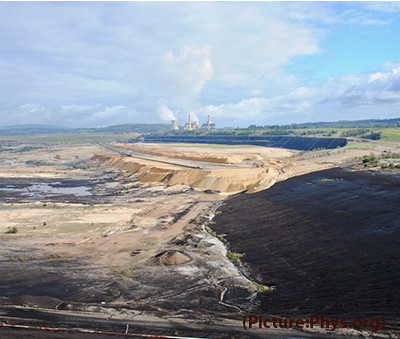 Between 40 and 34 million years ago, Earth’s climate underwent a major climatic transition. Before 40 million years ago, during the Eocene, Antarctica was covered by lush forests, but by 34 million years ago, in the Oligocene, these forests had been replaced by thick continental ice sheets, as we know Antarctica today. The main driver of this greenhouse to icehouse transition is widely debated, and little information is available about how climate changed on land. An international team led by Dr Vittoria Lauretano and
Between 40 and 34 million years ago, Earth’s climate underwent a major climatic transition. Before 40 million years ago, during the Eocene, Antarctica was covered by lush forests, but by 34 million years ago, in the Oligocene, these forests had been replaced by thick continental ice sheets, as we know Antarctica today. The main driver of this greenhouse to icehouse transition is widely debated, and little information is available about how climate changed on land. An international team led by Dr Vittoria Lauretano and  “We recognize that for some, the FDA approval of COVID-19 vaccines may bring additional confidence and encourage them to get vaccinated,” Abigail Capobianco, a spokeswoman at the FDA, said in a statement on Aug. 4. “Acknowledging the urgency related to the current state of the pandemic, we have taken an all-hands-on-deck approach, including identifying additional resources such as personnel and technological resources from across the agency and opportunities to reprioritize other activities, in order to complete our review to help combat this pandemic surge.”
“We recognize that for some, the FDA approval of COVID-19 vaccines may bring additional confidence and encourage them to get vaccinated,” Abigail Capobianco, a spokeswoman at the FDA, said in a statement on Aug. 4. “Acknowledging the urgency related to the current state of the pandemic, we have taken an all-hands-on-deck approach, including identifying additional resources such as personnel and technological resources from across the agency and opportunities to reprioritize other activities, in order to complete our review to help combat this pandemic surge.”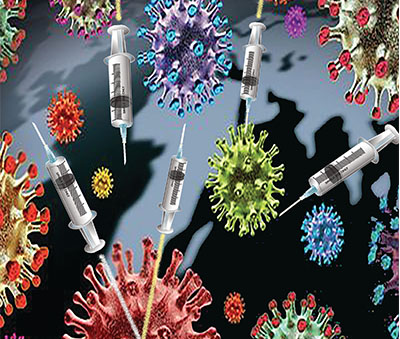 The agency said the halt should last at least two months, to give the world a chance to meet the director-general’s goal of vaccinating 10% of the population of every country by the end of September.
The agency said the halt should last at least two months, to give the world a chance to meet the director-general’s goal of vaccinating 10% of the population of every country by the end of September. Ram N Kumar, the founder of NirogStreet, has told the media that he was fortunate to find a clutch of investors from the US, who could not just invest but guide. “For me, if you get a person like Gokul to help you while building a company, it is a once in a lifetime opportunity,” Kumar said.
Ram N Kumar, the founder of NirogStreet, has told the media that he was fortunate to find a clutch of investors from the US, who could not just invest but guide. “For me, if you get a person like Gokul to help you while building a company, it is a once in a lifetime opportunity,” Kumar said. When a person is infected with COVID-19, antibodies are typically produced to fight against the invading disease. These antibodies are unique to each individual, meaning that some antibodies are better than others at combating the virus. Thus, pharmaceutical companies study thousands of these antibodies to take advantage of the most effective ones with the highest barrier to resistance.
When a person is infected with COVID-19, antibodies are typically produced to fight against the invading disease. These antibodies are unique to each individual, meaning that some antibodies are better than others at combating the virus. Thus, pharmaceutical companies study thousands of these antibodies to take advantage of the most effective ones with the highest barrier to resistance. Ashwagandha (Withania Somnifera), commonly known as ‘Indian winter cherry’, is a traditional Indian herb that boosts energy, reduces stress, and makes the immune system stronger.
Ashwagandha (Withania Somnifera), commonly known as ‘Indian winter cherry’, is a traditional Indian herb that boosts energy, reduces stress, and makes the immune system stronger. It’s not just our memories — this past June was the hottest June recorded in the U.S. in more than a century, about four degrees hotter on average. Heat waves (like in the
It’s not just our memories — this past June was the hottest June recorded in the U.S. in more than a century, about four degrees hotter on average. Heat waves (like in the  The U.S. Centers for Disease Control and Prevention (CDC) placed a significant roadblock to such tailored management when it changed its
The U.S. Centers for Disease Control and Prevention (CDC) placed a significant roadblock to such tailored management when it changed its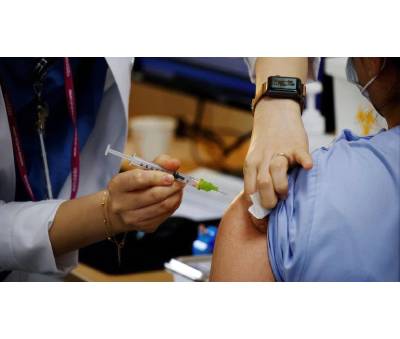 A full course of two of the most widely available coronavirus vaccines is about as effective against the more contagious delta variant as it was against a previously dominant version of the virus, according to
A full course of two of the most widely available coronavirus vaccines is about as effective against the more contagious delta variant as it was against a previously dominant version of the virus, according to 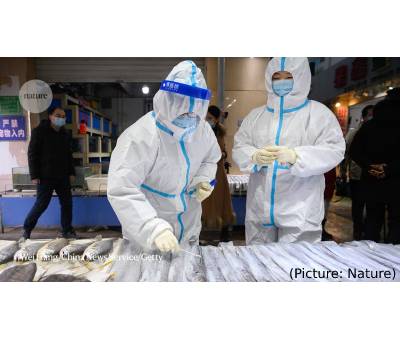 As a result, researchers expected another coronavirus epidemic or pandemic, though not necessarily one as bad as the COVID-19 outbreak. “This was the worst by far,” he said. Researchers anticipated the initial outbreak from China where the preceding epidemics occurred, but were surprised it came from Central China, not Southern China, as was the case with the 2002 SARS epidemic, he said.
As a result, researchers expected another coronavirus epidemic or pandemic, though not necessarily one as bad as the COVID-19 outbreak. “This was the worst by far,” he said. Researchers anticipated the initial outbreak from China where the preceding epidemics occurred, but were surprised it came from Central China, not Southern China, as was the case with the 2002 SARS epidemic, he said. Bernardinelli and Bernstein used algorithms at the National Center for Supercomputing Applications at the University of Illinois at Urbana-Champaign to identify trans-Neptunian objects. During their work, the astronomers traced 32 detections to one object. Comets are icy relics that were kicked out of the solar system when the giant planets formed and migrated to their current configurations. As comets approach our sun during their orbits, their ices evaporate, creating their signature appearance.
Bernardinelli and Bernstein used algorithms at the National Center for Supercomputing Applications at the University of Illinois at Urbana-Champaign to identify trans-Neptunian objects. During their work, the astronomers traced 32 detections to one object. Comets are icy relics that were kicked out of the solar system when the giant planets formed and migrated to their current configurations. As comets approach our sun during their orbits, their ices evaporate, creating their signature appearance. Each yearly delineation on the sequoia’s surface is a small part of a far grander story that ties together all of life on Earth. Scientists know this as Deep Time. It’s not just on the scale of centuries, millennia, epochs, or periods, but the ongoing flow that goes back to the origins of our universe, the formation of the Earth, and the evolution of all life, up through this present moment. It’s the backdrop for everything we see around us today, and it can be understood through techniques as different as absolute dating of radioactive minerals and counting the rings of a prehistoric tree. Each part informs the whole.
Each yearly delineation on the sequoia’s surface is a small part of a far grander story that ties together all of life on Earth. Scientists know this as Deep Time. It’s not just on the scale of centuries, millennia, epochs, or periods, but the ongoing flow that goes back to the origins of our universe, the formation of the Earth, and the evolution of all life, up through this present moment. It’s the backdrop for everything we see around us today, and it can be understood through techniques as different as absolute dating of radioactive minerals and counting the rings of a prehistoric tree. Each part informs the whole. The co-axial electrospinning technique is one of the most favorable and simple options to fabricate membranes with three-dimensional hierarchical structures. Dr. Woo’s research team used poly(vinylidene fluoride-co-hexafluoropropylene) as the core and silica aerogel mixed with a low concentration of the polymer as the sheath to produce a co-axial composite membrane and obtain a superhydrophobic membrane surface. In fact, silica aerogel exhibited a much lower thermal conductivity compared with that of conventional polymers, which led to increased water vapor flux during the membrane distillation process due to a reduction of conductive heat losses.
The co-axial electrospinning technique is one of the most favorable and simple options to fabricate membranes with three-dimensional hierarchical structures. Dr. Woo’s research team used poly(vinylidene fluoride-co-hexafluoropropylene) as the core and silica aerogel mixed with a low concentration of the polymer as the sheath to produce a co-axial composite membrane and obtain a superhydrophobic membrane surface. In fact, silica aerogel exhibited a much lower thermal conductivity compared with that of conventional polymers, which led to increased water vapor flux during the membrane distillation process due to a reduction of conductive heat losses. France, Germany and Italy, among other countries, now advise only one dose of vaccine for people with a healthy immune system and a confirmed previous diagnosis. Many scientists who have studied immune responses to vaccination say such policies are a sensible way to make the most of
France, Germany and Italy, among other countries, now advise only one dose of vaccine for people with a healthy immune system and a confirmed previous diagnosis. Many scientists who have studied immune responses to vaccination say such policies are a sensible way to make the most of  Over the centuries, the June solstice has inspired countless festivals,
Over the centuries, the June solstice has inspired countless festivals,  Co-authored by research scientists and engineers from WHOI, MBARI (Monterey Bay Aquarium Research Institute), and Stanford University, the paper outlines the robot’s success in autonomously tracking two gelatinous marine creatures during a 2019 research cruise in Monterey Bay. High-definition video revealed a “dinner plate” jellyfish “ramming” a siphonophore, which narrowly escaped the jelly’s venomous tentacles. Mesobot also recorded a 30-minute video of a giant larvacean, which appears to be nearly motionless but is actually riding internal waves that rise and fall 6 meters (20 feet). These observations represent the first time that a self-guided robot has tracked these small, clear creatures as they move through the water column like a “parcel of water,” said Yoerger.
Co-authored by research scientists and engineers from WHOI, MBARI (Monterey Bay Aquarium Research Institute), and Stanford University, the paper outlines the robot’s success in autonomously tracking two gelatinous marine creatures during a 2019 research cruise in Monterey Bay. High-definition video revealed a “dinner plate” jellyfish “ramming” a siphonophore, which narrowly escaped the jelly’s venomous tentacles. Mesobot also recorded a 30-minute video of a giant larvacean, which appears to be nearly motionless but is actually riding internal waves that rise and fall 6 meters (20 feet). These observations represent the first time that a self-guided robot has tracked these small, clear creatures as they move through the water column like a “parcel of water,” said Yoerger. NASA states that the NGC 4680 is a tricky galaxy to classify. The space agency further states that this is because the galaxy is sometimes referred to as a spiral galaxy, but it is also sometimes classified as a lenticular galaxy. Lenticular galaxies are said to fall somewhere in between spiral galaxies and elliptical galaxies. The NGC 4680 galaxy is said to have distinguishable spiral arms that are not clearly defined, and the tip of one arm appears very diffuse.
NASA states that the NGC 4680 is a tricky galaxy to classify. The space agency further states that this is because the galaxy is sometimes referred to as a spiral galaxy, but it is also sometimes classified as a lenticular galaxy. Lenticular galaxies are said to fall somewhere in between spiral galaxies and elliptical galaxies. The NGC 4680 galaxy is said to have distinguishable spiral arms that are not clearly defined, and the tip of one arm appears very diffuse. In March 2019, late-stage international trials of aducanumab, involving about 3,000 patients, were halted when analysis showed the drug, given as a monthly infusion, was not better at slowing the deterioration of memory and thinking problems than a dummy drug.But later that year, the US manufacturer Biogen analysed more data and concluded the drug did work, as long as it was given in higher doses. The company also said it significantly slowed cognitive decline.Aducanumab targets amyloid, a protein that forms abnormal clumps in the brains of people with Alzheimer’s that can damage cells and trigger dementia, including:
In March 2019, late-stage international trials of aducanumab, involving about 3,000 patients, were halted when analysis showed the drug, given as a monthly infusion, was not better at slowing the deterioration of memory and thinking problems than a dummy drug.But later that year, the US manufacturer Biogen analysed more data and concluded the drug did work, as long as it was given in higher doses. The company also said it significantly slowed cognitive decline.Aducanumab targets amyloid, a protein that forms abnormal clumps in the brains of people with Alzheimer’s that can damage cells and trigger dementia, including: This idea of electrons “surfing” on the electric field is a theory first introduced in 1946 by a Russian physicist, Lev Landau, that was named Landau damping. His theory has now been proven.Recreating the northern lights Scientists have understood for decades how the aurora most likely is created, but they have now been able to simulate it, for the first time, in a lab at the Large Plasma Device (LPD) in UCLA’s Basic Plasma Science Facility.Scientists used a 20-meter-long chamber to recreate Earth’s magnetic field using the powerful magnetic field coils on UCLA’s LPD. Inside the chamber, scientists generated a plasma similar to what exists in space near the Earth.
This idea of electrons “surfing” on the electric field is a theory first introduced in 1946 by a Russian physicist, Lev Landau, that was named Landau damping. His theory has now been proven.Recreating the northern lights Scientists have understood for decades how the aurora most likely is created, but they have now been able to simulate it, for the first time, in a lab at the Large Plasma Device (LPD) in UCLA’s Basic Plasma Science Facility.Scientists used a 20-meter-long chamber to recreate Earth’s magnetic field using the powerful magnetic field coils on UCLA’s LPD. Inside the chamber, scientists generated a plasma similar to what exists in space near the Earth. In 2020 – one of the three warmest years on record – the global average temperature was 1.2 degrees Celsius above the pre-industrial baseline, according to an April
In 2020 – one of the three warmest years on record – the global average temperature was 1.2 degrees Celsius above the pre-industrial baseline, according to an April 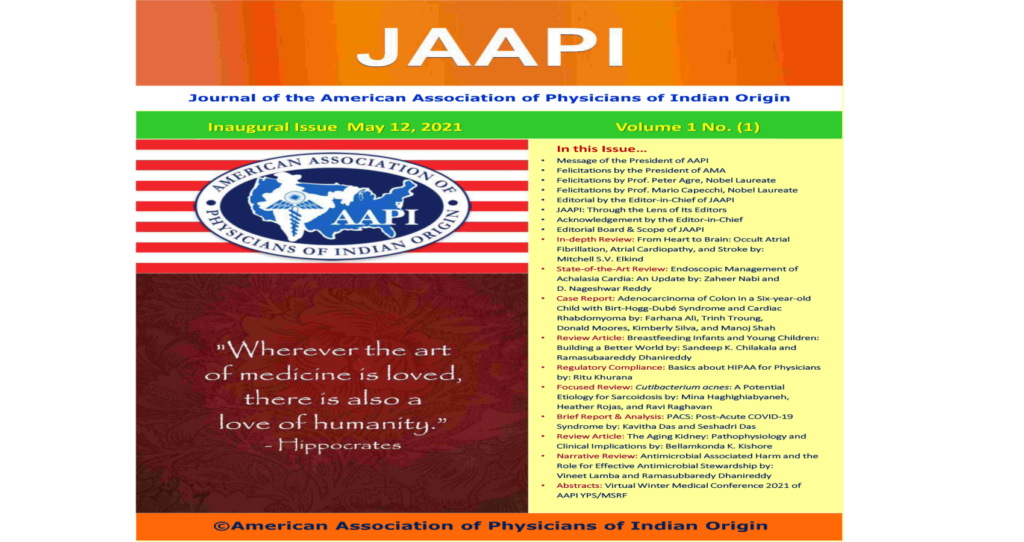 Dr. Susan R. Bailey, President of American Medication Association (AMA), who was the Chief Guest and Distinguished speaker at the launch event, inaugurated JAAPI on Wednesday, May 12, 2021 during a solemn virtual ceremony, attended by hundreds of AAPI members and supporters from around the nation.Dr. Susan R. Bailey, while inaugurating JAAPI said, “It’s my pleasure to celebrate the launch of JAAPI. On behalf of AMA we congratulate AAPI for this new initiative, which will be a great source of medical education. We applaud you and looking forward to reading your great contributions in the years to come.”
Dr. Susan R. Bailey, President of American Medication Association (AMA), who was the Chief Guest and Distinguished speaker at the launch event, inaugurated JAAPI on Wednesday, May 12, 2021 during a solemn virtual ceremony, attended by hundreds of AAPI members and supporters from around the nation.Dr. Susan R. Bailey, while inaugurating JAAPI said, “It’s my pleasure to celebrate the launch of JAAPI. On behalf of AMA we congratulate AAPI for this new initiative, which will be a great source of medical education. We applaud you and looking forward to reading your great contributions in the years to come.” “Physician Leadership In Times of Crisis & Transition” was the theme of an hour long CME presented by Dr. Bailey at the conclusion of the JAAPI launch ceremony. The insightful and practically oriented CME was organized by American Association of Physicians of Indian Origin, in affiliation with Chicago Medical Society and in association with Indian American Medical Association of Illinois IAMA (IL.)
“Physician Leadership In Times of Crisis & Transition” was the theme of an hour long CME presented by Dr. Bailey at the conclusion of the JAAPI launch ceremony. The insightful and practically oriented CME was organized by American Association of Physicians of Indian Origin, in affiliation with Chicago Medical Society and in association with Indian American Medical Association of Illinois IAMA (IL.) The findings showed that the chance of death rose between 2016 and 2018 by 7 per cent in hospitals that did not implement the policy, and fell by 11 per cent in hospitals that did implement the policy.The chances of being re-admitted increased by 6 per cent in the comparison hospitals over time, but stayed the same in hospitals that implemented the policy. Between 2016 and 2018, the length of stay fell by 5 per cent in the hospitals that did not implement the policy, and by 9 per cent in hospitals that did.
The findings showed that the chance of death rose between 2016 and 2018 by 7 per cent in hospitals that did not implement the policy, and fell by 11 per cent in hospitals that did implement the policy.The chances of being re-admitted increased by 6 per cent in the comparison hospitals over time, but stayed the same in hospitals that implemented the policy. Between 2016 and 2018, the length of stay fell by 5 per cent in the hospitals that did not implement the policy, and by 9 per cent in hospitals that did. Dexamethasone, an inexpensive corticosteroid, is an older drug that has been found most beneficial in hospitalized patients who require invasive mechanical ventilation. Yet, when given too early in Covid-19, for example, when supplemental oxygen is not required, dexamethasone may be detrimental. Dexamethasone may also be inappropriate for use in patients that have co-morbidities such as obesity and diabetes. Dexamethasone has been used to reduce cellular immune responses and treat patients with acute respiratory distress syndrome (ARDS). It is now repurposed to combat severe symptoms of Covid-19 and is one tool in the Covid-19 treatment armamentarium.
Dexamethasone, an inexpensive corticosteroid, is an older drug that has been found most beneficial in hospitalized patients who require invasive mechanical ventilation. Yet, when given too early in Covid-19, for example, when supplemental oxygen is not required, dexamethasone may be detrimental. Dexamethasone may also be inappropriate for use in patients that have co-morbidities such as obesity and diabetes. Dexamethasone has been used to reduce cellular immune responses and treat patients with acute respiratory distress syndrome (ARDS). It is now repurposed to combat severe symptoms of Covid-19 and is one tool in the Covid-19 treatment armamentarium. “The changes in NOAA’s new report are only a degree or less but can still have a big impact, especially when much of the past century has seen steadily increasing temperatures, with the most pronounced changes occurring in the past several decades,” said Nick Bassill, a meteorologist at the University at Albany. “The unfortunate thing is that this does not make a bigger splash, even though it’s almost universally accepted that the new climate normals were going to come in warmer than the last report.”
“The changes in NOAA’s new report are only a degree or less but can still have a big impact, especially when much of the past century has seen steadily increasing temperatures, with the most pronounced changes occurring in the past several decades,” said Nick Bassill, a meteorologist at the University at Albany. “The unfortunate thing is that this does not make a bigger splash, even though it’s almost universally accepted that the new climate normals were going to come in warmer than the last report.” On query of Professor Medvedev that what value the study of ‘thukdam’ could have for humanity in general. The spiritual leader replied Tibetan Buddhists believe that people go through a process of dissolution in the course of death.
On query of Professor Medvedev that what value the study of ‘thukdam’ could have for humanity in general. The spiritual leader replied Tibetan Buddhists believe that people go through a process of dissolution in the course of death. ASEI Michigan chapter president Muthu Sivanantham introduced and facilitated discussion with the next two speakers. Dr Raj Ramesh, a TEDx speaker who happens to have a doctorate in AI was the next author to speak. He has broad experience with digital transformation and helps organizations bring together complementary strengths of machines and humans to effect grand change. His talk featuring interesting doodles and interactive audience participation surveys was patterned on his recent book, “AI & You” and he advised how to co-exist with machines by sharing how to think, thrive, and transform in an AI driven future.
ASEI Michigan chapter president Muthu Sivanantham introduced and facilitated discussion with the next two speakers. Dr Raj Ramesh, a TEDx speaker who happens to have a doctorate in AI was the next author to speak. He has broad experience with digital transformation and helps organizations bring together complementary strengths of machines and humans to effect grand change. His talk featuring interesting doodles and interactive audience participation surveys was patterned on his recent book, “AI & You” and he advised how to co-exist with machines by sharing how to think, thrive, and transform in an AI driven future.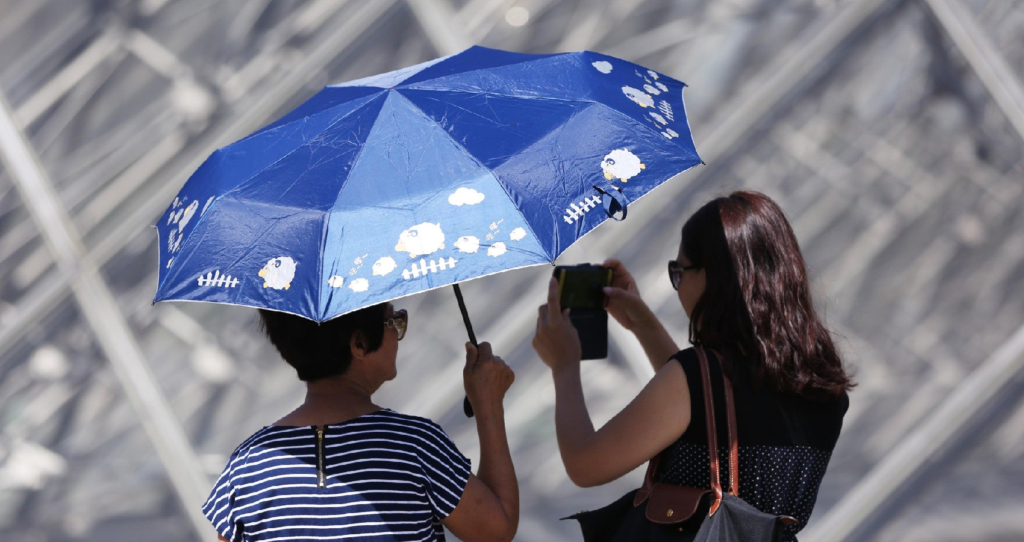 United States Special Presidential Envoy for Climate, John Kerry had met Prime Minister Narendra Modi and environment minister Prakash Javadekar earlier this month regarding increasing climate ambition ahead of COP 26 in Glasgow this November. Minister for Europe and Foreign Affairs of France, Jean-Yves Le Drian had also met Javadekar and said all countries should be on track to achieve carbon neutrality and start phasing out coal.
United States Special Presidential Envoy for Climate, John Kerry had met Prime Minister Narendra Modi and environment minister Prakash Javadekar earlier this month regarding increasing climate ambition ahead of COP 26 in Glasgow this November. Minister for Europe and Foreign Affairs of France, Jean-Yves Le Drian had also met Javadekar and said all countries should be on track to achieve carbon neutrality and start phasing out coal.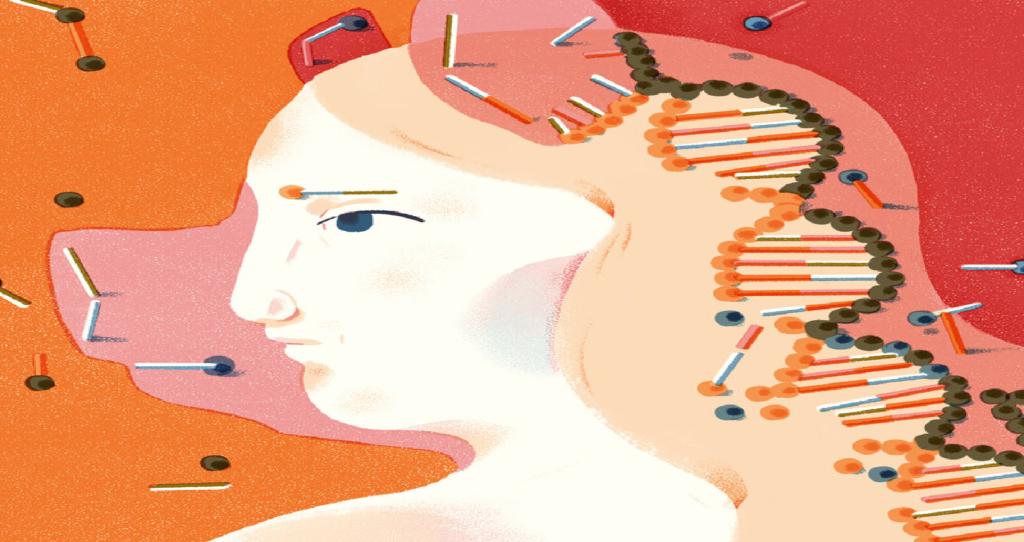 After one day, the researchers reported, they were able to detect human cells growing in 132 of the embryos and were able study the embryos for up to 19 days. That enabled the scientists to learn more about how animal cells and human cells communicate, an important step toward eventually helping researchers find new ways to grow organs for transplantation in other animals, Belmonte said.
After one day, the researchers reported, they were able to detect human cells growing in 132 of the embryos and were able study the embryos for up to 19 days. That enabled the scientists to learn more about how animal cells and human cells communicate, an important step toward eventually helping researchers find new ways to grow organs for transplantation in other animals, Belmonte said. Archaeologists started excavating in September in the area between the temples of King Ramses III and Amenhotep III. The original goal of the mission was to find King Tutankhamen’s mortuary temple, the statement said.
Archaeologists started excavating in September in the area between the temples of King Ramses III and Amenhotep III. The original goal of the mission was to find King Tutankhamen’s mortuary temple, the statement said.